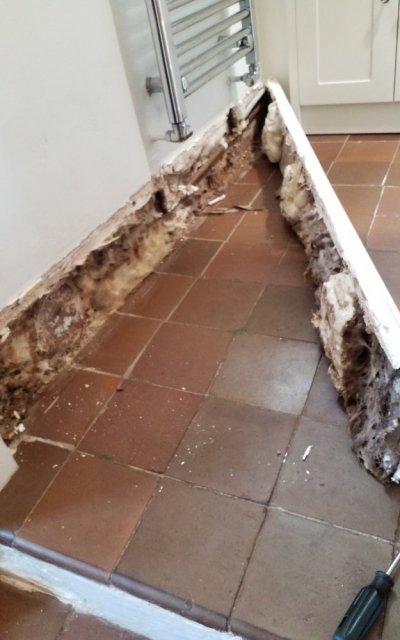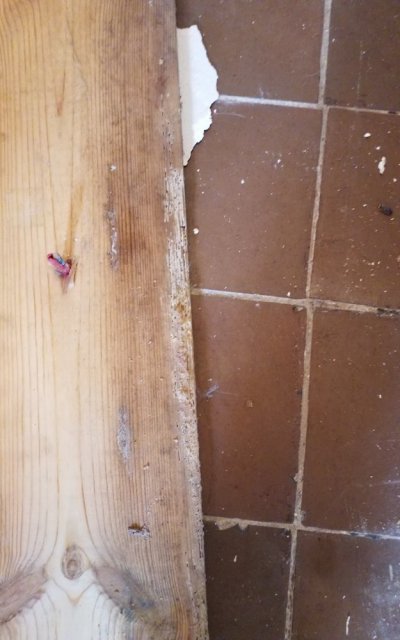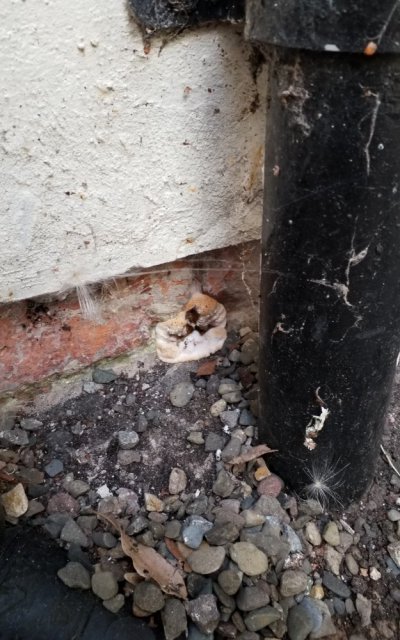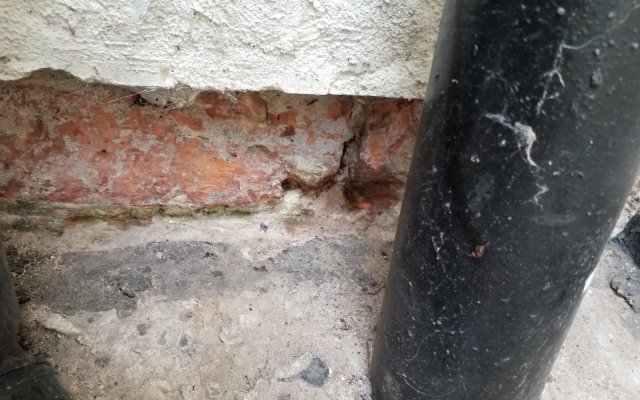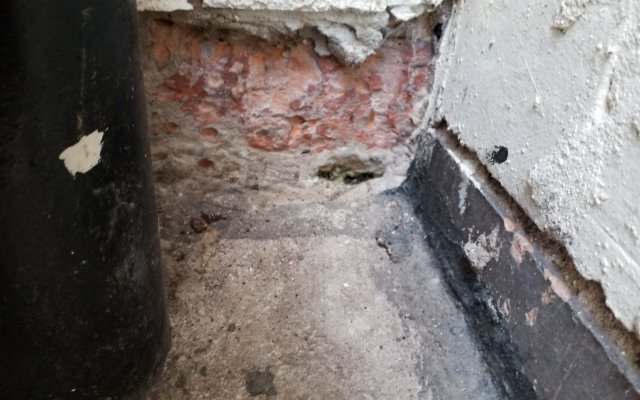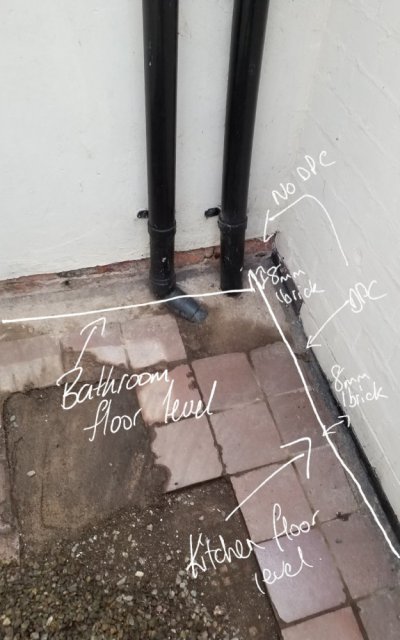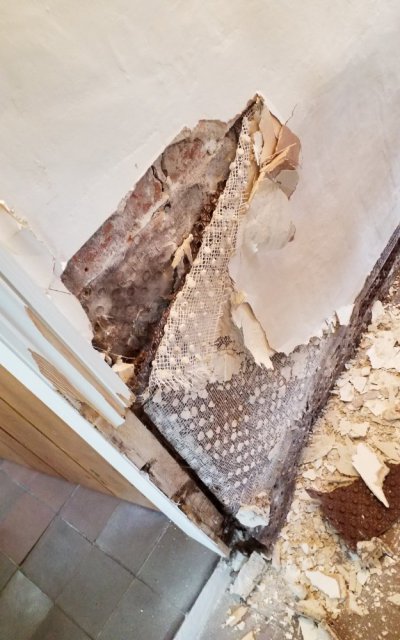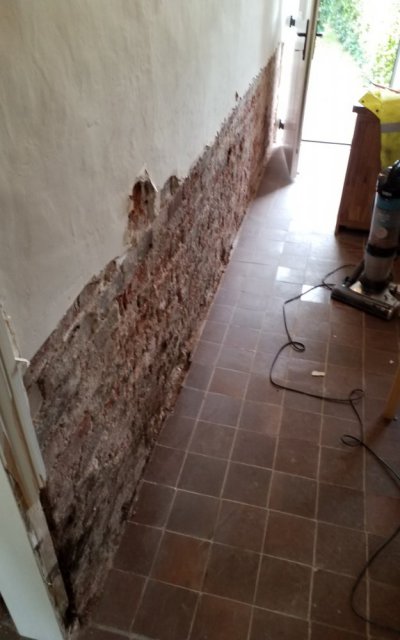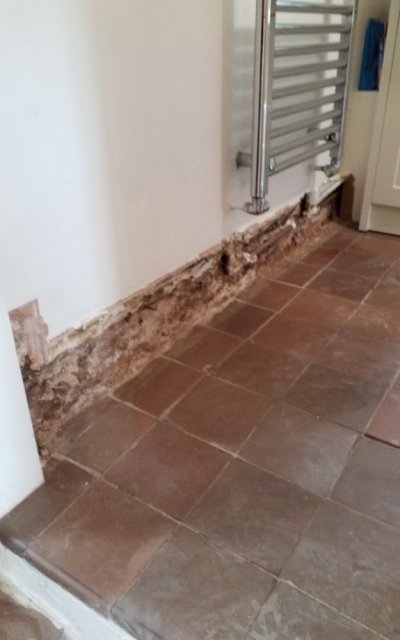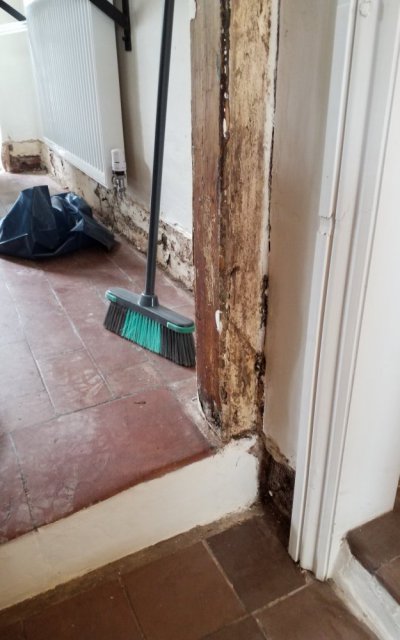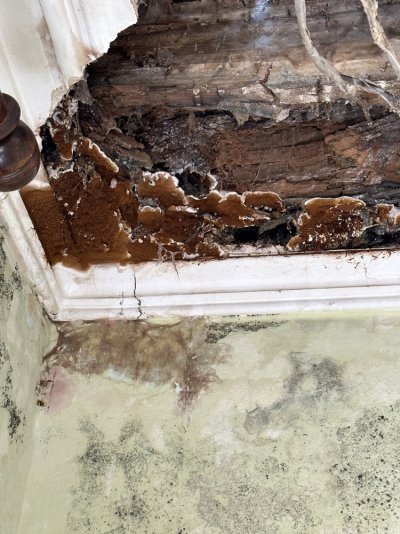bart
Member
- Messages
- 11
- Location
- Shropshire
Hi,
Avid reader becomes owner/poster thank you for taking the time to share in my learning.
We bought our dream late 19thC (fully renovated) 2 bed mid terrace property. 1 month on we have found 2 areas of damp, neither disclosed by the vendor or picked up by our full structural survey (but that's another story).
North west corner of circa 1950's kitchen extension we found black mould in kitchen cupboard.
North East corner of 19thC original building we found a mushroom.
On advice we called in Peter Cox (Rentokill) last week who discovered dry rot running along the kitchen skirting into the lounge and around the bathroom with elevated moisture readings of 30%+. Suggested remedial action includes removal of all effected timber, spray treatment, waterproof scree application, dpc injection and replaster. Total (ball park cost £4k) tbc in next weeks report.
However I was unnerved by the PC surveyors/salesman's apparent lack of knowledge when I quizzed him on where the water would go as a result of the intended waterproofing in the lounge and seemed disinterested in addressing the source of the damp.
Reading here and elsewhere it seems waterproofing/ dpc is a poor option even in the bathroom given a solid brick built construction and managing water source improving ventilation is more of the priority.
Positioned near the the top of a hill our 20m rear garden drops about 1.2m before the back door. The lounge is another 20mm step down internally -intended solution french drain (dependant on septic tank feeds) 40mm depth roughly 800mm from North wall running west-east to a run off in our neighbours garden.
We've additional discovered all downpipes aren't linked to surface water drainage - intended solution water butts or channel as above.
One of our downpipes appears to be cemented in right next to septic tank vent (which is a concern) and the exterior ground level raised (above the kitchen dpc) in the worst effected areas - intended solution investigate downpipe and lower ground levels and south-north French drain to feed west east drainage.
Additionally I have some concerns about septic tank centrally located upslope (levels look low and garden looks lush) and have a survey booked which I hope might provide insight before digging French drain.
Have I got my priorities right?
1. Investigate septic tank
2. Dig French drain/ drainage /connect water butts
3. Treat dry rot
As an aside removing some plaster we found some kind of plastic water proofing behind lime plaster in the lounge and found modern paint in the shed which looks to have been liberally applied internally and externally so looks like I might well be a regular here for the foreseeable future...
Thanks again for the info and letting me bounce ideas
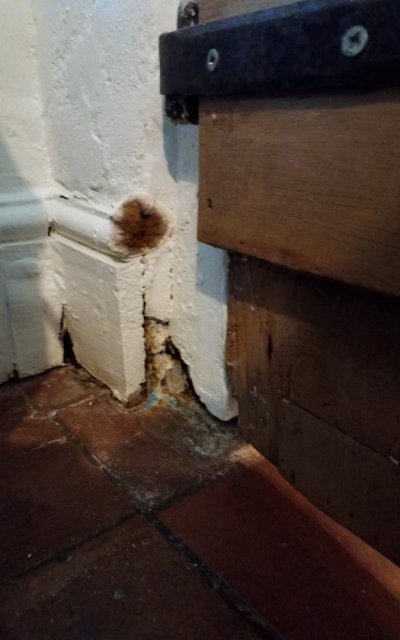
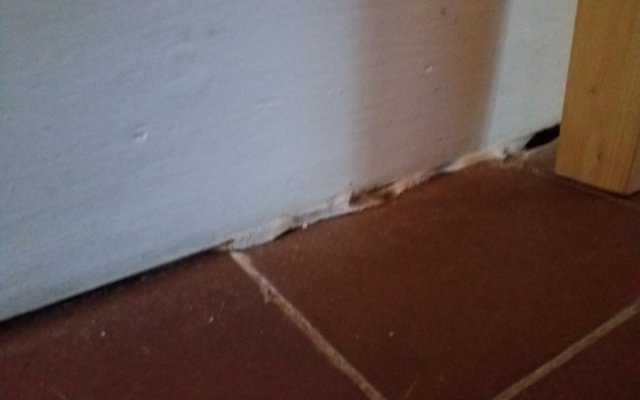
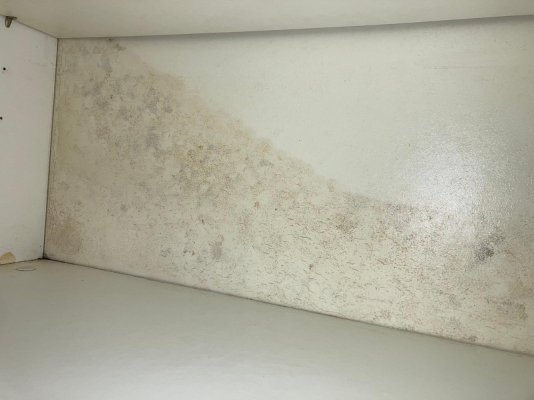
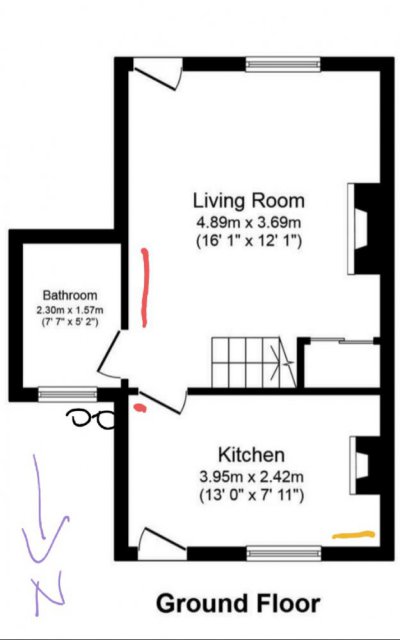
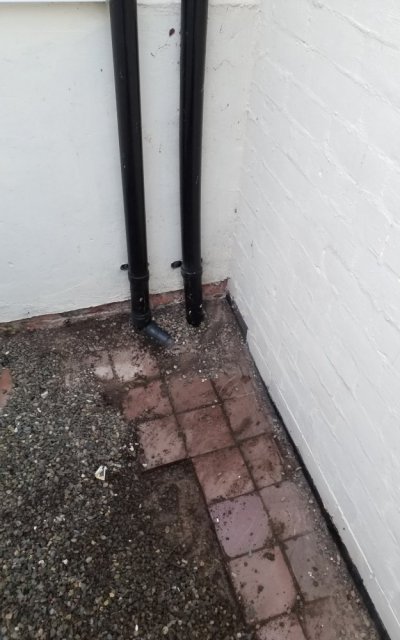
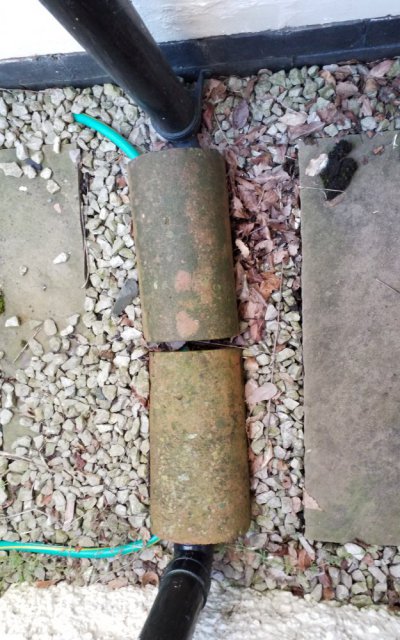
Avid reader becomes owner/poster thank you for taking the time to share in my learning.
We bought our dream late 19thC (fully renovated) 2 bed mid terrace property. 1 month on we have found 2 areas of damp, neither disclosed by the vendor or picked up by our full structural survey (but that's another story).
North west corner of circa 1950's kitchen extension we found black mould in kitchen cupboard.
North East corner of 19thC original building we found a mushroom.
On advice we called in Peter Cox (Rentokill) last week who discovered dry rot running along the kitchen skirting into the lounge and around the bathroom with elevated moisture readings of 30%+. Suggested remedial action includes removal of all effected timber, spray treatment, waterproof scree application, dpc injection and replaster. Total (ball park cost £4k) tbc in next weeks report.
However I was unnerved by the PC surveyors/salesman's apparent lack of knowledge when I quizzed him on where the water would go as a result of the intended waterproofing in the lounge and seemed disinterested in addressing the source of the damp.
Reading here and elsewhere it seems waterproofing/ dpc is a poor option even in the bathroom given a solid brick built construction and managing water source improving ventilation is more of the priority.
Positioned near the the top of a hill our 20m rear garden drops about 1.2m before the back door. The lounge is another 20mm step down internally -intended solution french drain (dependant on septic tank feeds) 40mm depth roughly 800mm from North wall running west-east to a run off in our neighbours garden.
We've additional discovered all downpipes aren't linked to surface water drainage - intended solution water butts or channel as above.
One of our downpipes appears to be cemented in right next to septic tank vent (which is a concern) and the exterior ground level raised (above the kitchen dpc) in the worst effected areas - intended solution investigate downpipe and lower ground levels and south-north French drain to feed west east drainage.
Additionally I have some concerns about septic tank centrally located upslope (levels look low and garden looks lush) and have a survey booked which I hope might provide insight before digging French drain.
Have I got my priorities right?
1. Investigate septic tank
2. Dig French drain/ drainage /connect water butts
3. Treat dry rot
As an aside removing some plaster we found some kind of plastic water proofing behind lime plaster in the lounge and found modern paint in the shed which looks to have been liberally applied internally and externally so looks like I might well be a regular here for the foreseeable future...
Thanks again for the info and letting me bounce ideas







